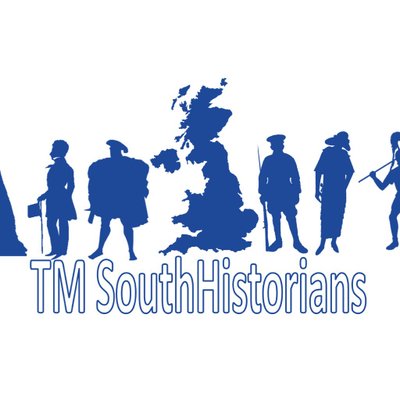
Last Saturday (23rd June 2018) I took the hour drive from Wiltshire down to Poole High School for the first ever @TMSouthHistory teach meet, masterminded by @Jmosley_history. I was really excited to be able to attend a teach meet for historians that was much more local than most, which usually seem to be London or further North. On Twitter it was clear that a lot of time and effort had gone in to building up #TMSouthHistorians, so was looking forward to hearing some great ideas, and even doing a short presentation myself (5 a day revision linked here). I took my trusty bullet journal with me to note down the fab teaching and learning practice, and thought I’d write up just a few of them here. I have tried to link as many Twitter handles as I can to the wonderful ideas.
Quick wins
The day kicked off with 1 minute quick wins, where 10 ideas were shared. I spoke about Historical Guess Who, which I will upload resources to in another post.
Just a few of these ideas were:
- Using radiooooo.com where you can select music from a particular country and decade to add some specific musical atmosphere to the classroom.
- Using the beloved revision o’clocks alongside temperature gauges to show significance of the point or how prepared they feel for a question on that area. @TKidman
- Using ‘Pick The Perfect Example’ to get students to include place, time, person and event. @clewisE2
- Class loyalty cards (think coffee shop style) to help engage those tricker classes. @Jmosley_history
The first longer session I attended was by James, which gave us a whole host of great, interactive ideas to use in lessons. There were so many fantastic ideas but some of my favourites were the ‘gamification’ ones. Battleships, where if you don’t hit a ship you need to answer the question in that square. The 5 Second Rule game is like it sounds, where students pick a question and have 5 seconds to answer to then move along the grid. An oldie but a goodie was using blockbusters for key words, but I liked the idea of printing it a5 for students to annotate around, which they can then complete all the key words as homework after playing the game in lesson.
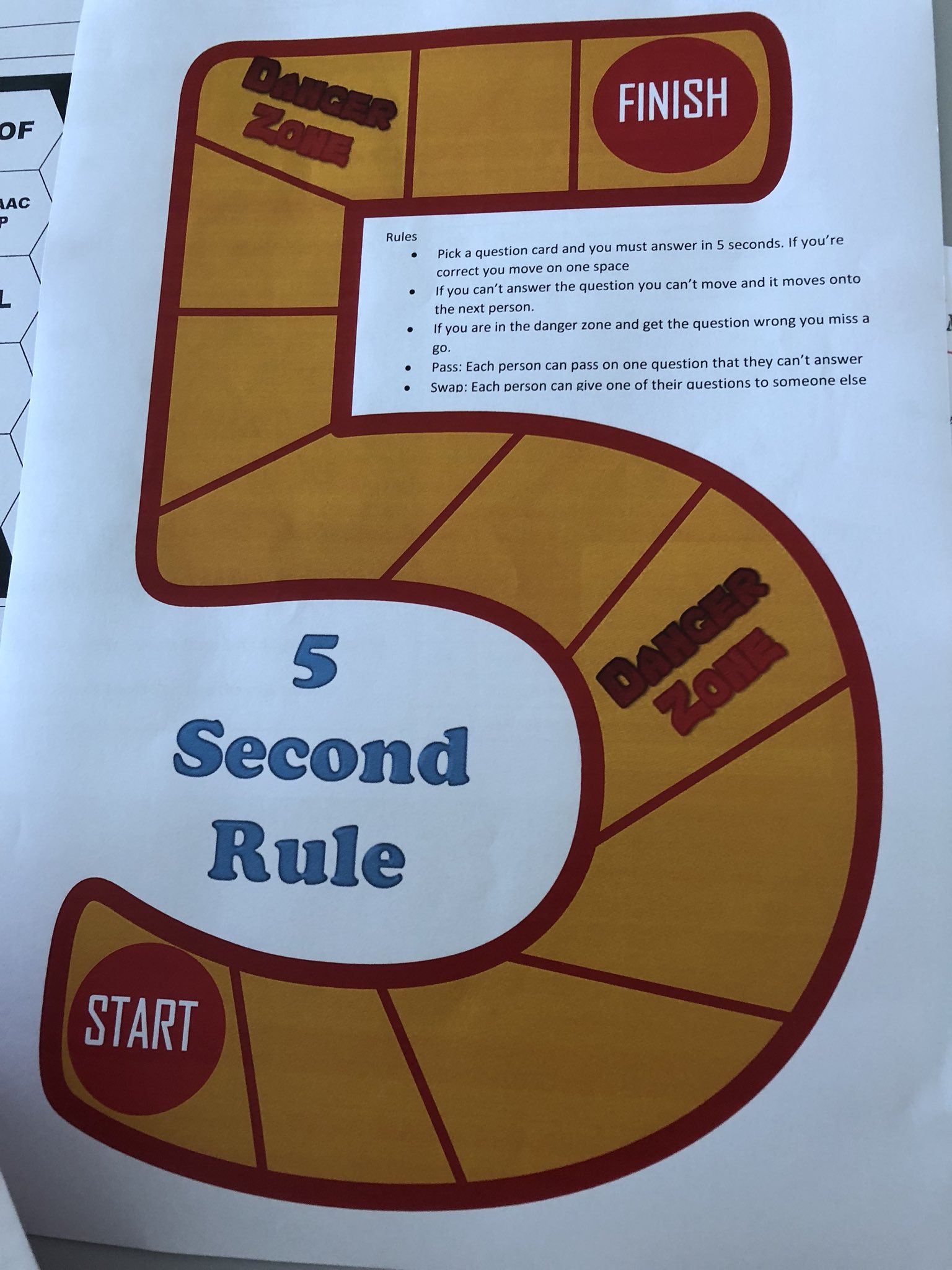
Another great idea was the secret mission cards which you can give to particular students in a lesson to help them focus on a certain skill (literacy, class participation, behaviour) and reward them if they succeed in doing so- can give quite personalised targets on a lesson by lesson basis.

Another great idea was the secret mission cards which you can give to particular students in a lesson to help them focus on a certain skill (literacy, class participation, behaviour) and reward them if they succeed in doing so- can give quite personalised targets on a lesson by lesson basis.
I also really liked the half-termly GCSE parental newsletter his school have created, which provides parents with what their child is learning, questions they could ask them based on their recent learning, and where they can guide their child to for help if they are stuck. A great idea to help keep parents and guardians in the loop and encourage historical conversations at home.
Session: Teaching Interpretations, @Ms_C_Allen
Next, I went to the session hosted by Claire which tackled the tricky task of interpretations. During the session we saw some interesting ideas being used to help students get their head around interpretations for the AQA GCSE, and had a great conversation among the attendees and Claire about how much of a challenge this is for teachers and students alike.
Claire identified specific challenges faced: needing to ban the idea that a source is ‘biased’; putting the interpretation into context; ‘it can’t be trusted because it is fake news’; students find the interpretations difficult to access as many are hard to read based on the level of literacy.
We agreed that it is important to get students reading difficult texts early, especially in ks3. This will help with interpretations and building their resilience in working through them to understand what is being said. A way to do this with the younger years is annotating with pictures. Furthermore, it is a great opportunity to dust off the visualiser and model tackling the interpretation with students.
Another ideas was to get students to have 5 minutes to write down everything they know about the topic the interpretation is linked to before then deconstructing it.
Sharing is Caring part one
After a cuppa and two (well, maybe four) custard creams, we all came back to the main room to listen to 10 minute presentations. One of these was my Historical 5 a day which I have already posted about explaining how they work.
@MrBajkowski - This presentation showed two ideas, one was that of using a football team to decide significant people (which I'm sure you can find better explained that what I've written in my scribbled notes on Twitter!). The other idea was that of 'dual coding', or as someone else put it, 'words and pictures'. This can be either through using emojis or road signs, which can help students with comprehension, language, or demonstrating their knowledge by selecting pictures they think are appropriate.
@andrewsweet4 - Andrew explained the fantastic idea of the 'guest historian'. He made a pertinent point that students need to know historians to be able to write and speak like them. This can start off with teachers reading work by historical experts in the topic they are teaching, which can then be utilised in lesson by using extracts of their work, examples of historical debates, chapter homeworks, and even name checking historians (which Andrew had then seen a student quote in an exam). He also suggested to tweet or email historians to show them that your students are reading their work, and it is a magic moment when you get a reply which students love!
@MrsJHistory - Looking at A Level in particular, we considered what universities actually want as attributes of their undergraduates, and how this can be nurtured during A Level. Knowledge organisers and regular low stakes testing was discussed in this 10 minute presentation, where the organisers can then be used as revision of key dates, people and terms to be tested regularly in class. Another great idea was to have an 'arbitrator' during debates, to reach a judgement that both sides of the argument could accept. For marking essays, students can peer review and redraft, marking other students work in 3 rounds: structure; knowledge and content; argument and judgement.
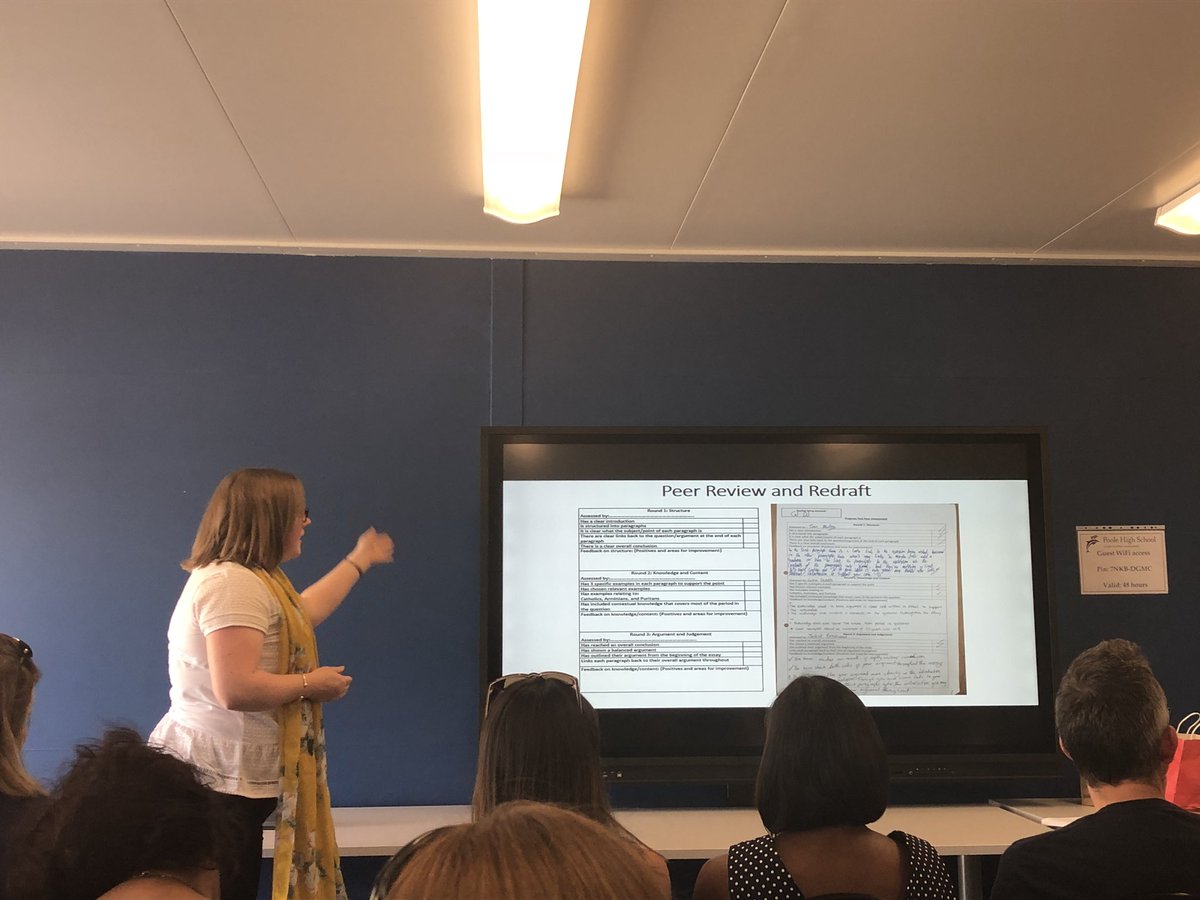
Session: Teaching Conceptual Understanding at KS3, @misscookhistory
After a great lunch (kudos to James' mum who helped out with this!), we headed off to our final longer sessions. I chose to go to my fellow PGCE trainee, Rachael's session on how her department are reworking their ks3 curriculum with life after levels. Her department spent considerable time on INSET thinking about 'why should young people study history?', to which they decided students should be equipped with the means to approach information with an analytical and critical mindset. Therefore, their ks3 SOWs should be based around conceptual understanding. I won't go into too much detail as I know Rachael will be explaining their approach in a future Teaching History article, but it was really interesting to see a curriculum which spent longer on less topics, with the vision of embedding key historical skills in depth, i.e. spending a large part of Year 7 studying causation.
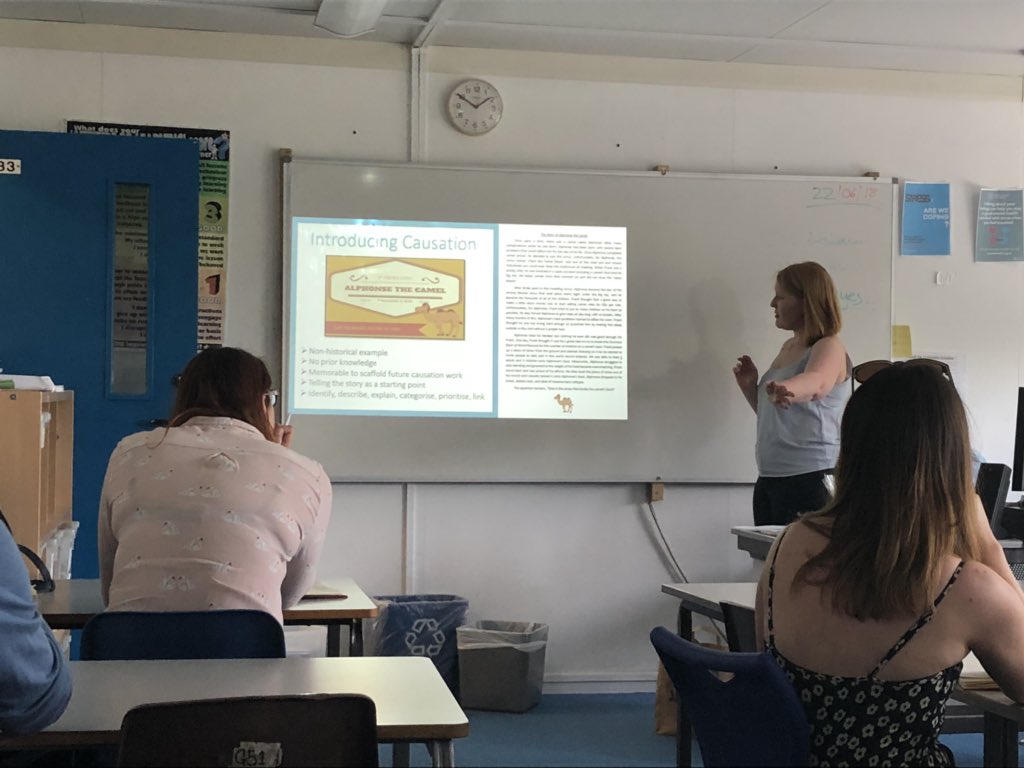
Sharing is Caring part two
The final part of the day, before thank yous and an amazing raffle, we had some more great ideas from teachers.
@CAHumanities - Ian took us through some ideas which are simple yet very effective and could be implemented in your classroom when you went back to work after the weekend. Some of my favourites were showing students a pie chart at the beginning of a lesson which set out how the lesson would be split up and how much would be spent writing, in class discussion etc. Another idea was to have 5x6person tables in your classroom, where each student is numbered 1-6, which means that any lesson you have a really simple way to randomly question students. A great idea which is already used for some historical figures is to give them an 'accurate adjective' to describe them. The example that comes to mind straight away is 'Bloody Mary', but you or students could create their own to help remember that person- one of our favourites we came up with was 'Brilliant Bazalgette', loving an alliteration as well!
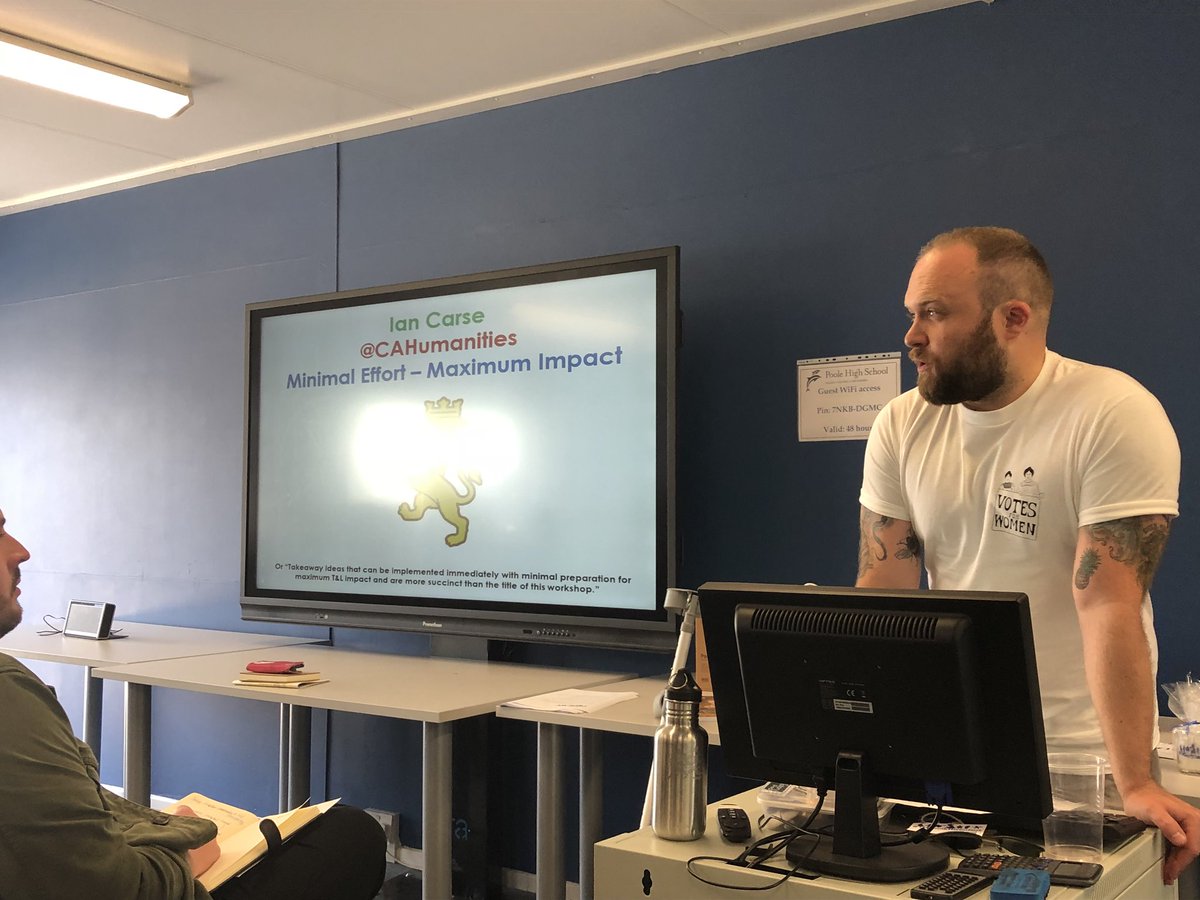
@LRyall_History - Lucy discussed how she has made it her mission to use her visualiser in lesson effectively. One way is through modelling. You can model presentation expectations at the start of the year (a recommendation was to have a blank exercise book on your desk which you can model with), and drawing tables into books so that it is actually of a size students can write information into! It can also be used to model difficult tasks, such as deconstructing interpretations. You also end up with WAGOLLS (what a good one looks like) in your exercise book which you could then photocopy for students who might have missed that lesson. The other way is to share student work with the class, showing good work, which you can also live mark on the visualiser, praising the student whose work it is, even using a simple highlighter to show the great bits which other students could focus on.
@HLHistory - Hannah explained her love of using music in the classroom if really effective ways. You can give students a sense of period by putting on some plainchant when learning about Thomas Becket's murder, or as initial stimulus (Strange Fruit for racism in America). She also played some binaural beats study music, which helps students focus and you can use to control volume in the classroom. Another great idea was to create topic-specific revision playlists, which students can pick songs to add to it- Hannah mentioned Highway to Hell for Black Death, and how a student chose Hotline Bling to help remember the hotline between Washington and Moscow after the Cuban Missile Crisis.
@Ms_C_Allen - Claire discussed how she is an emoji convert, using them for 'recap and roll' games, where an emoji can be linked to the topic and students have to work out how it links (there can be some ambiguity to its meaning so students can debate how they interpret it). A tried and tested method is using emojis where students can link them to the topic they are studying- they come up with some really interesting ideas!
@LDNHumsTeacher - Heather shared her dislike for the amount of time marking ks3 homework was taking, in some cases more time ended up being spent marking posters instead of A Level essays (something I think many could relate to). She shared her flipped learning for homework, where students have a sheet for the weekly homeworks they have for that topic. The homework is 5 basic questions which relate to the next lessons content (what date, who did X?) By doing some future learning at home, this was then self or peer marked as a starter that lesson, saving potentially hours of marking every week, whilst also being a meaningful task for students to start their learning off for the particular topic.
The day finished off with an amazing raffle with great prizes that had been donated. Here I am with my copy of Teaching Backwards I won, which I can't wait to read to great back into my teaching as I come off of maternity leave.
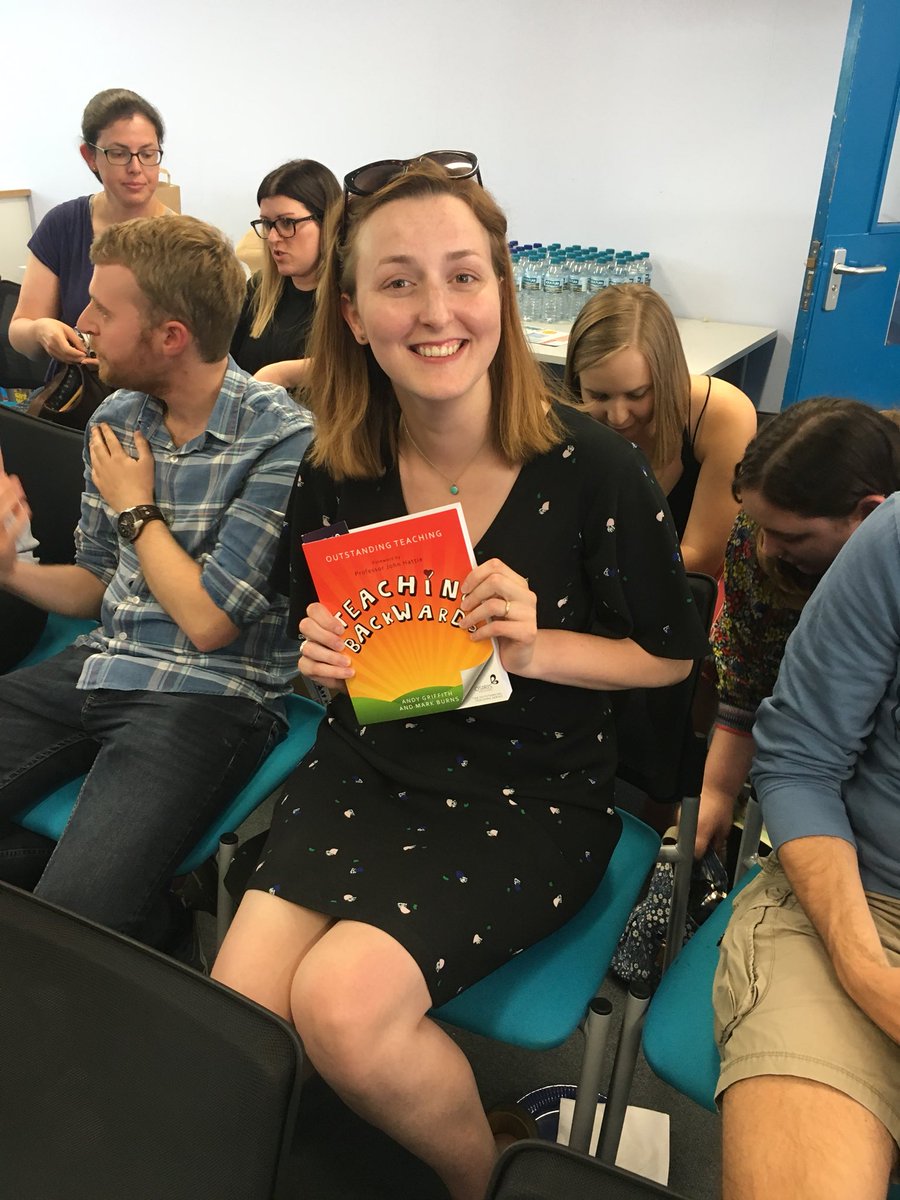 It was the best CPD I've ever had, and what was so amazing was that it was FREE! A lovely bunch of fellow historians and a very well organised day. Follow @TMSouthHistory on Twitter where they share more great ideas, and some resources, blog posts etc are on their website, https://tmsouthhistorians.wixsite.com/tmsouthhistorians
It was the best CPD I've ever had, and what was so amazing was that it was FREE! A lovely bunch of fellow historians and a very well organised day. Follow @TMSouthHistory on Twitter where they share more great ideas, and some resources, blog posts etc are on their website, https://tmsouthhistorians.wixsite.com/tmsouthhistorians
Sharing is Caring part one
After a cuppa and two (well, maybe four) custard creams, we all came back to the main room to listen to 10 minute presentations. One of these was my Historical 5 a day which I have already posted about explaining how they work.
@MrBajkowski - This presentation showed two ideas, one was that of using a football team to decide significant people (which I'm sure you can find better explained that what I've written in my scribbled notes on Twitter!). The other idea was that of 'dual coding', or as someone else put it, 'words and pictures'. This can be either through using emojis or road signs, which can help students with comprehension, language, or demonstrating their knowledge by selecting pictures they think are appropriate.
@andrewsweet4 - Andrew explained the fantastic idea of the 'guest historian'. He made a pertinent point that students need to know historians to be able to write and speak like them. This can start off with teachers reading work by historical experts in the topic they are teaching, which can then be utilised in lesson by using extracts of their work, examples of historical debates, chapter homeworks, and even name checking historians (which Andrew had then seen a student quote in an exam). He also suggested to tweet or email historians to show them that your students are reading their work, and it is a magic moment when you get a reply which students love!
@MrsJHistory - Looking at A Level in particular, we considered what universities actually want as attributes of their undergraduates, and how this can be nurtured during A Level. Knowledge organisers and regular low stakes testing was discussed in this 10 minute presentation, where the organisers can then be used as revision of key dates, people and terms to be tested regularly in class. Another great idea was to have an 'arbitrator' during debates, to reach a judgement that both sides of the argument could accept. For marking essays, students can peer review and redraft, marking other students work in 3 rounds: structure; knowledge and content; argument and judgement.

Session: Teaching Conceptual Understanding at KS3, @misscookhistory
After a great lunch (kudos to James' mum who helped out with this!), we headed off to our final longer sessions. I chose to go to my fellow PGCE trainee, Rachael's session on how her department are reworking their ks3 curriculum with life after levels. Her department spent considerable time on INSET thinking about 'why should young people study history?', to which they decided students should be equipped with the means to approach information with an analytical and critical mindset. Therefore, their ks3 SOWs should be based around conceptual understanding. I won't go into too much detail as I know Rachael will be explaining their approach in a future Teaching History article, but it was really interesting to see a curriculum which spent longer on less topics, with the vision of embedding key historical skills in depth, i.e. spending a large part of Year 7 studying causation.

Sharing is Caring part two
The final part of the day, before thank yous and an amazing raffle, we had some more great ideas from teachers.
@CAHumanities - Ian took us through some ideas which are simple yet very effective and could be implemented in your classroom when you went back to work after the weekend. Some of my favourites were showing students a pie chart at the beginning of a lesson which set out how the lesson would be split up and how much would be spent writing, in class discussion etc. Another idea was to have 5x6person tables in your classroom, where each student is numbered 1-6, which means that any lesson you have a really simple way to randomly question students. A great idea which is already used for some historical figures is to give them an 'accurate adjective' to describe them. The example that comes to mind straight away is 'Bloody Mary', but you or students could create their own to help remember that person- one of our favourites we came up with was 'Brilliant Bazalgette', loving an alliteration as well!

@LRyall_History - Lucy discussed how she has made it her mission to use her visualiser in lesson effectively. One way is through modelling. You can model presentation expectations at the start of the year (a recommendation was to have a blank exercise book on your desk which you can model with), and drawing tables into books so that it is actually of a size students can write information into! It can also be used to model difficult tasks, such as deconstructing interpretations. You also end up with WAGOLLS (what a good one looks like) in your exercise book which you could then photocopy for students who might have missed that lesson. The other way is to share student work with the class, showing good work, which you can also live mark on the visualiser, praising the student whose work it is, even using a simple highlighter to show the great bits which other students could focus on.
@HLHistory - Hannah explained her love of using music in the classroom if really effective ways. You can give students a sense of period by putting on some plainchant when learning about Thomas Becket's murder, or as initial stimulus (Strange Fruit for racism in America). She also played some binaural beats study music, which helps students focus and you can use to control volume in the classroom. Another great idea was to create topic-specific revision playlists, which students can pick songs to add to it- Hannah mentioned Highway to Hell for Black Death, and how a student chose Hotline Bling to help remember the hotline between Washington and Moscow after the Cuban Missile Crisis.
@Ms_C_Allen - Claire discussed how she is an emoji convert, using them for 'recap and roll' games, where an emoji can be linked to the topic and students have to work out how it links (there can be some ambiguity to its meaning so students can debate how they interpret it). A tried and tested method is using emojis where students can link them to the topic they are studying- they come up with some really interesting ideas!
@LDNHumsTeacher - Heather shared her dislike for the amount of time marking ks3 homework was taking, in some cases more time ended up being spent marking posters instead of A Level essays (something I think many could relate to). She shared her flipped learning for homework, where students have a sheet for the weekly homeworks they have for that topic. The homework is 5 basic questions which relate to the next lessons content (what date, who did X?) By doing some future learning at home, this was then self or peer marked as a starter that lesson, saving potentially hours of marking every week, whilst also being a meaningful task for students to start their learning off for the particular topic.
The day finished off with an amazing raffle with great prizes that had been donated. Here I am with my copy of Teaching Backwards I won, which I can't wait to read to great back into my teaching as I come off of maternity leave.
 It was the best CPD I've ever had, and what was so amazing was that it was FREE! A lovely bunch of fellow historians and a very well organised day. Follow @TMSouthHistory on Twitter where they share more great ideas, and some resources, blog posts etc are on their website, https://tmsouthhistorians.wixsite.com/tmsouthhistorians
It was the best CPD I've ever had, and what was so amazing was that it was FREE! A lovely bunch of fellow historians and a very well organised day. Follow @TMSouthHistory on Twitter where they share more great ideas, and some resources, blog posts etc are on their website, https://tmsouthhistorians.wixsite.com/tmsouthhistorians
Comments
Post a Comment